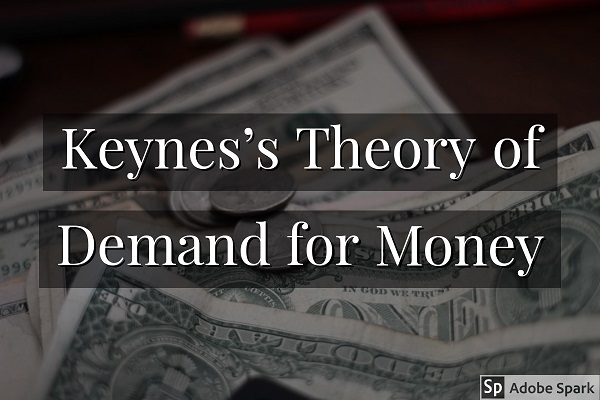Keynes’s Theory of Demand for Money –
How much of his income or resources will a person hold in form of ready money and how much will he lend depends upon his liquidity preference.
Demand for money is also called Liquidity Preference which means demand for money to hold or the desire of the public to hold money in form of cash.
Liquidity preference of a particular individual depends on various factors. But the main question is – Why should the people hold their resources in liquid form when they can get interest by lending money or buying bonds or stocks ?
According to Keynes, the desire to hold money arises because of three motives,
1. Transaction motive
2. Precautionary motive
3. Speculative motive
1. The Transaction Demand for Money –
Under the transaction motive, people hold money in form of cash balances for transaction purposes, because receipt of money and payments do not coincide. Most of the people receive their paychecks weekly or monthly while the expenditure goes on everyday. So, a certain amount of cash is kept in hand to make current payments. This amount will depend on the size of the individual’s income, the interval at which income is received and methods of payments prevailing in the society.
The businessmen and the entrepreneurs also have to keep a proportion of their resources in liquid form to meet daily needs. They need money all the time to pay for raw material, to pay salaries and to meet all other current expanses. The amount of money held by businessmen and entrepreneurs depends mostly on the turnover. The larger the turnover, larger will be the amount of money needed to cover current expanses.
Demand for transaction motive arises primarily because of the use of money as a medium of exchange.
The damand for money is a demand for real cash balances for the purpose of buying goods and services. The higher the price level, the more money in form of cash a person has to hold in order to purchase a given quantity of goods. If the price level doubles, then the individual has to keep twice the amount of money in order to buy the same quantity of goods. Same is true for businessmen and entrepreneurs. So, the demand for money balances is demand for real rather than nominal balances.
According to Keynes, the transactions demand for money depends only on the real income and not influenced by the rate of interest.
2. Precautionary Demand for Money –
Under precautionary motive people holds money in cash form or liquid form for unforeseen contingencies such as sickness, accidents, danger of unemployment and other uncertain perils. The amount of money demanded for precautionary motive will depend on the psychology of the individual and the conditions in which he lives.
3. Speculative Demand for Money –
The speculative motive is related to the desire of the people to hold money in liquid form to take advantage of market movements regarding the future changes in the rate of interest. The cash held under this motive is used to make speculative gains by dealing in bonds and shares, whose prices fluctuates.
If bond or share prices are expected to rise (means that the rate of interest is expected to fall), businessmen will buy bonds or shares to sell when their prices actually rise.
In the other case, if the bond or share prices are expected to fall (means that the rate of interest is expected to rise), businessmen will sell bonds or shares to avoid capital losses.
If the rate of interest is higher than the less money will be held under the speculative motive and vice versa.
There is an inverse relation between the rate of interest and speculative damand for money.
Demand for money is a decreasing function of the rate of interest because as the rate of interest increases demand decreases and vice versa.
